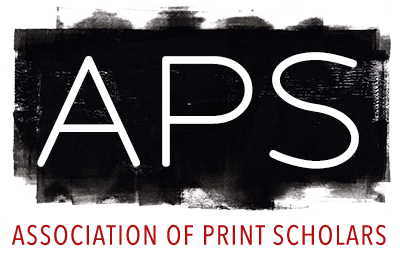Job
Posted: 02/25/2021
Posted by: Association of Print Scholars
Expires: 03/15/2021
Assistant to the Director
The Print Center,
Philadelphia,
PA, United States
Applications due: 03/15/2021
The Print Center, a nonprofit organization located in Philadelphia’s historic Rittenhouse Square neighborhood, encourages the growth and understanding of photography and printmaking as vital contemporary arts through exhibitions, publications and ed. . .
ucational programs. The Print Center is a locally, nationally and internationally significant gallery, as well as a significant community art and advocacy organization with an international outlook and a strong sense of local purpose. Founded in 1915, our mission is unique in its dedication to printmaking and photography.
The Print Center has a $600,000 annual operating budget, a full-time staff of 5 and an engaged Board of Governors. Additional information on The Print Center may be found at www.printcenter.org. The Assistant to the Director assists the Executive Director and provides administrative support to the entire Print Center staff. The major responsibilities are outlined below.
Responsibilities
- Act as point of contact for visitors and handle incoming requests for information
- Assist the Executive Director as required, which includes:
- Gathering information for grant applications and reports
- Preparing for Board and Committee meetings
- Preparing general correspondence, donor acknowledgments and donation requests
- Generating reports on members and donors
- Work with the Development & Communications Manager on social media and website management
- Assist Curator with ANNUAL International Competition correspondence
- Administer Membership program
- Maintain contact database (Donorperfect) and create/maintain email and hard copy mailing lists
- Maintain attendance and program records
- Recruit and interview interns
- Act as office manager – maintaining supplies and day-to-day cleanliness
- Manage set-up for events
- Other duties as needed
Qualifications
- Bachelor’s Degree required
- Knowledge of contemporary art with an interest in printmaking and photography
- Excellent writing and interpersonal skills
- Knowledge of social media platforms and Microsoft
- Knowledge of WordPress preferred
- Strong attention to detail and ability to handle multiple assignments in a fast-paced, deadline-oriented environment
Compensation
- $27,000 per year, paid monthly
- Fully covered health, short-term, long-term and term life insurance, after probationary period
- Generous vacation time, after probationary period
Send cover letter and resume to search@printcenter.org
The Print Center has a $600,000 annual operating budget, a full-time staff of 5 and an engaged Board of Governors. Additional information on The Print Center may be found at www.printcenter.org. The Assistant to the Director assists the Executive Director and provides administrative support to the entire Print Center staff. The major responsibilities are outlined below.
Responsibilities
- Act as point of contact for visitors and handle incoming requests for information
- Assist the Executive Director as required, which includes:
- Gathering information for grant applications and reports
- Preparing for Board and Committee meetings
- Preparing general correspondence, donor acknowledgments and donation requests
- Generating reports on members and donors
- Work with the Development & Communications Manager on social media and website management
- Assist Curator with ANNUAL International Competition correspondence
- Administer Membership program
- Maintain contact database (Donorperfect) and create/maintain email and hard copy mailing lists
- Maintain attendance and program records
- Recruit and interview interns
- Act as office manager – maintaining supplies and day-to-day cleanliness
- Manage set-up for events
- Other duties as needed
Qualifications
- Bachelor’s Degree required
- Knowledge of contemporary art with an interest in printmaking and photography
- Excellent writing and interpersonal skills
- Knowledge of social media platforms and Microsoft
- Knowledge of WordPress preferred
- Strong attention to detail and ability to handle multiple assignments in a fast-paced, deadline-oriented environment
Compensation
- $27,000 per year, paid monthly
- Fully covered health, short-term, long-term and term life insurance, after probationary period
- Generous vacation time, after probationary period
Send cover letter and resume to search@printcenter.org
Relevant research areas: North America, 20th Century, Contemporary, Book arts, Collograph, Digital printmaking, Engraving, Etching, Letterpress, Lithography, Monoprinting, Papermaking, Relief printing, Screenprinting
